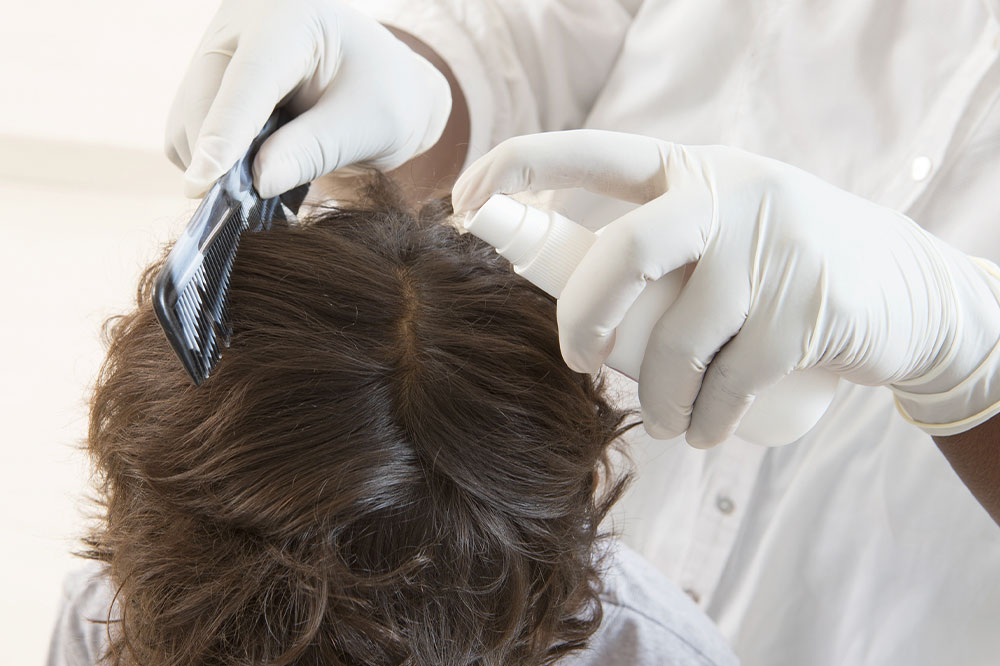
Head lice – Symptoms, causes, and remedies
Head lice are tiny insects that feed on the blood from the human scalp. They spread through direct transfer from one person’s hair to another and typically affect children. Lice in the head indicate being in an unclean environment or poor hygiene and they do not carry any viral or bacterial diseases. Certain remedies can help get rid of them. It is important to understand the signs, causes, and suitable treatment options for head lice.
Symptoms
Some of the common symptoms associated with head lice are as follows:
- Itching
This is one of the common symptoms of head lice. One may experience itching on the ears, neck, and scalp. It is an allergic reaction to the louse bites. When one gets head lice for the first time, the itching generally starts within four to six weeks. - Sores on the shoulders, neck, and scalp
Scratching may result in tiny, red bumps, which may get infected with bacteria. - Lice eggs on the hair shafts
Lice eggs or nits stick to the hair shafts. Since they are tiny, it is difficult to see them. But one can spot them around the neck’s hairline or the ears. Empty nits are easier to spot since they are lighter in color and remain farther from the scalp. Moreover, having nits does not necessarily imply the presence of live lice. - Lice on the scalp
One may spot the lice moving around in the hair, but it is usually tricky because they avoid light, are small, and move quickly.
Causes
Head lice are contagious; so, one may be infected with them as the insects crawl into one’s head. Some of the factors that can cause head lice are:
- Using the same fabric that is used by someone with head lice.
- Sharing personal items, like the comb of someone who is infested.
- Touching one’s head to that of someone with head lice.
Even though transmission is possible via inanimate objects, it is usually unlikely. Some inanimate objects that may cause head lice are headphones, hats, barrettes, headbands, brushes, and combs. At times, the lice may live for long on bedding, upholstered furniture, clothing, or towels. However, the primary means of transmission is head-to-head contact. It is common in children as they play with one another.
Who is at risk?
Head lice do not fly or jump; instead, they crawl and spread from one person to another via head-to-head contact. Thus, it is usually common among children who play or go to school together or within a family. In addition, the family members of school-going children are likely to get head lice. Similarly, people working in elementary schools, preschools, or daycare centers are also at this risk. Direct contact with someone having a lice problem is one of its biggest causes, and it is unlikely for the lice to spread without direct contact.
Treatment options and remedies
One must opt for lice treatment only in case of an active infestation. So, if one sees lice eggs or lice crawling and alive, they must take some action immediately. It is also important to take remedial measures if one shares a bed with an actively infected individual. One can find some prescription options and natural remedies that can actively kill lice. However, itching takes some days to subside.
Here are some of the recommended treatment options:
- Lice cream and shampoo
Products containing permethrin or pyrethrins help to get rid of active lice. - Prescription lotions and shampoos
If common options do not work, one may consult a doctor. Prescription lotions and shampoos are relatively stronger and provide a faster relief compared to commonly available shampoos and creams. - Lice-removal comb
These are generally used for children. One may remove the lice nits and lice using a fine-tooth lice comb. Adults may consider heat treatments for lice removal. - Natural remedies
One may use suffocating agents such as olive oil or mayonnaise and essential oils like ylang-ylang and tea tree oil to remove lice.




